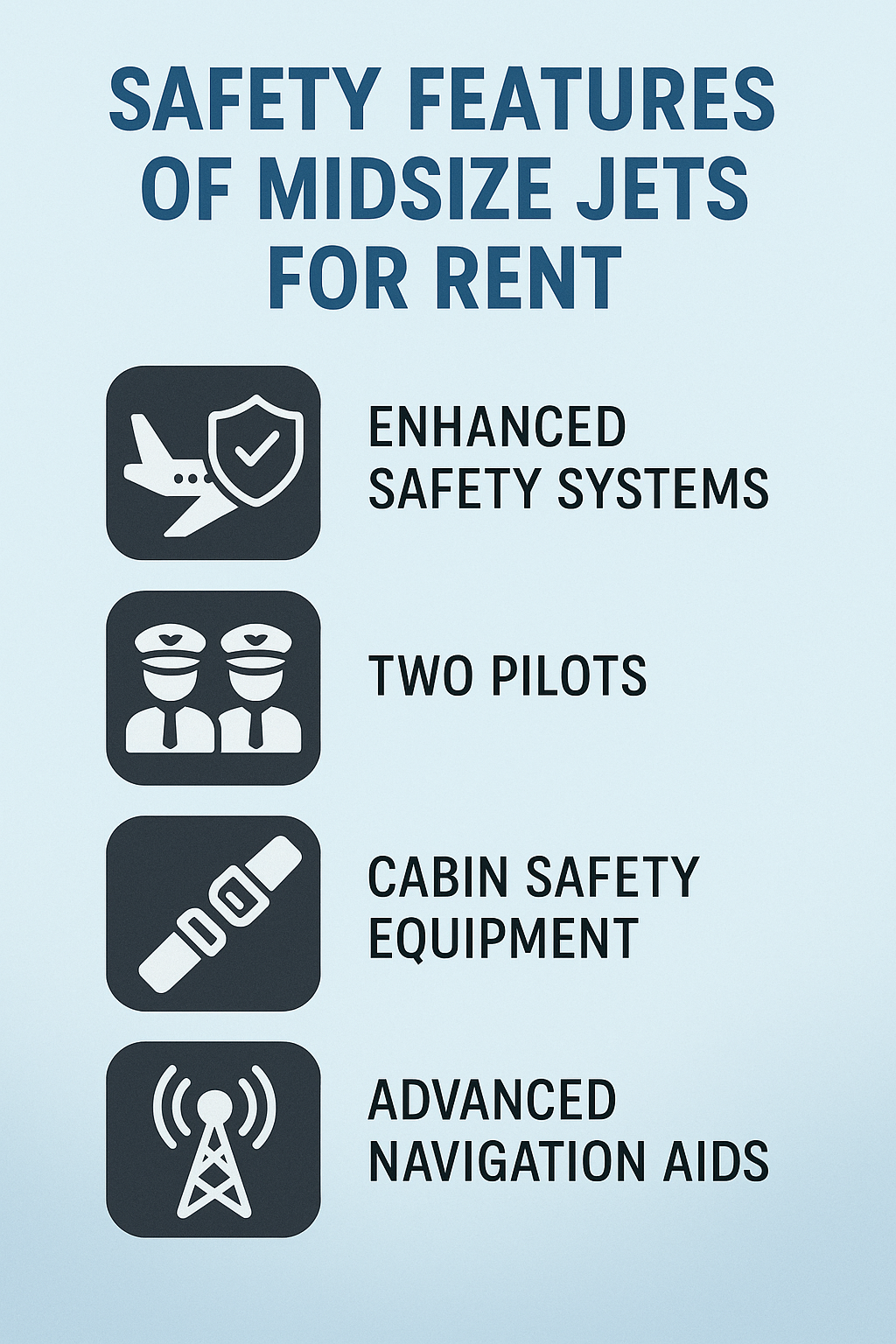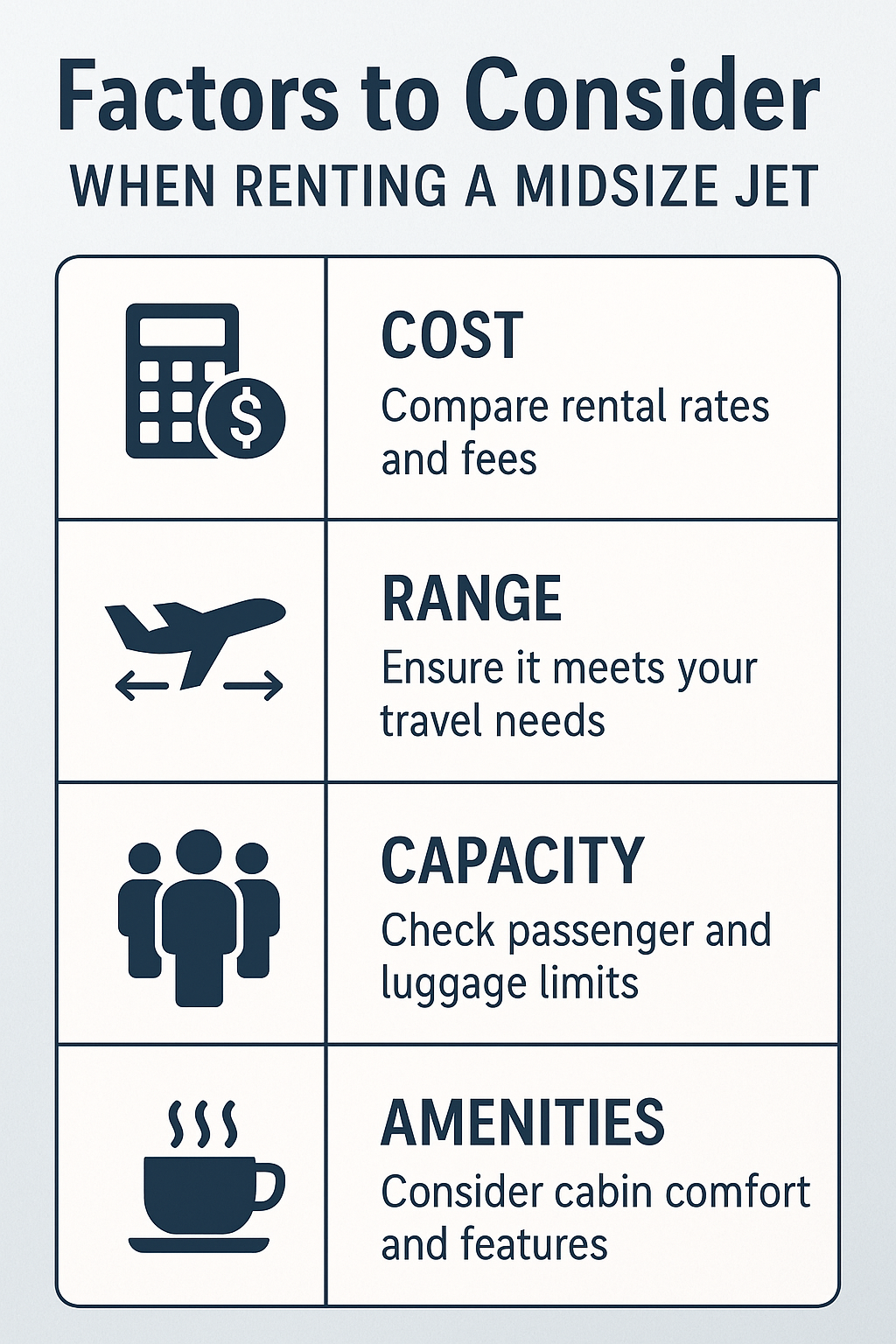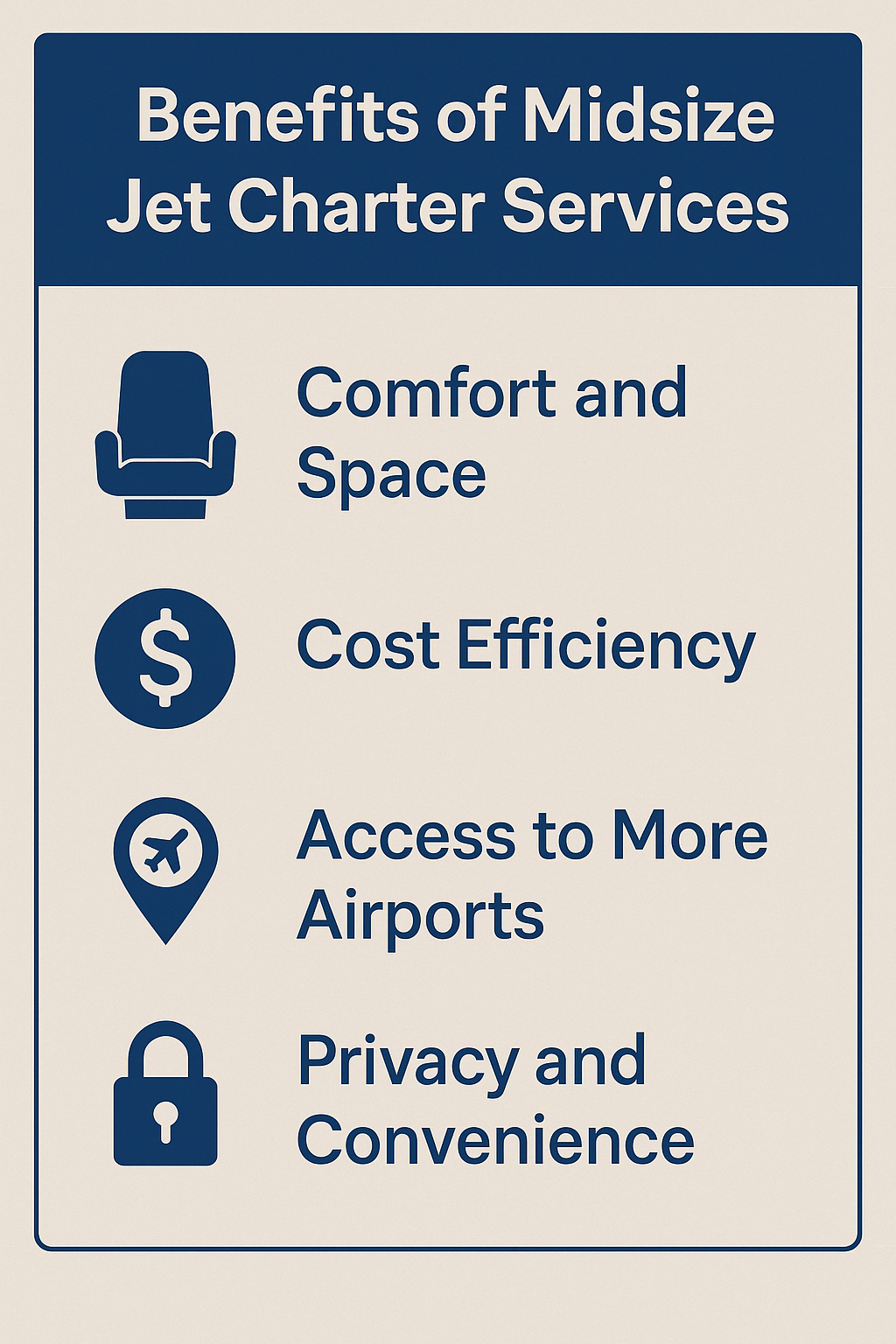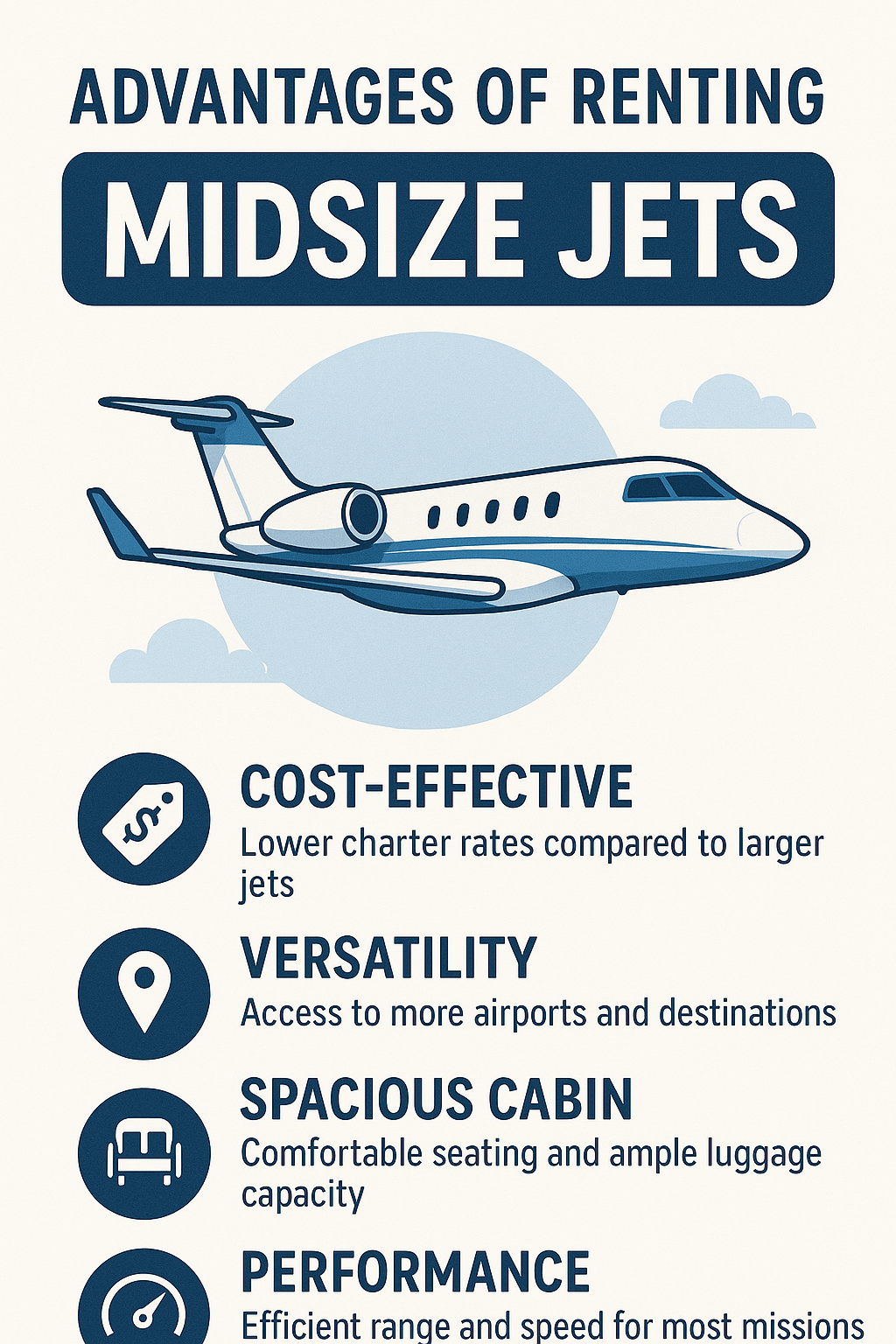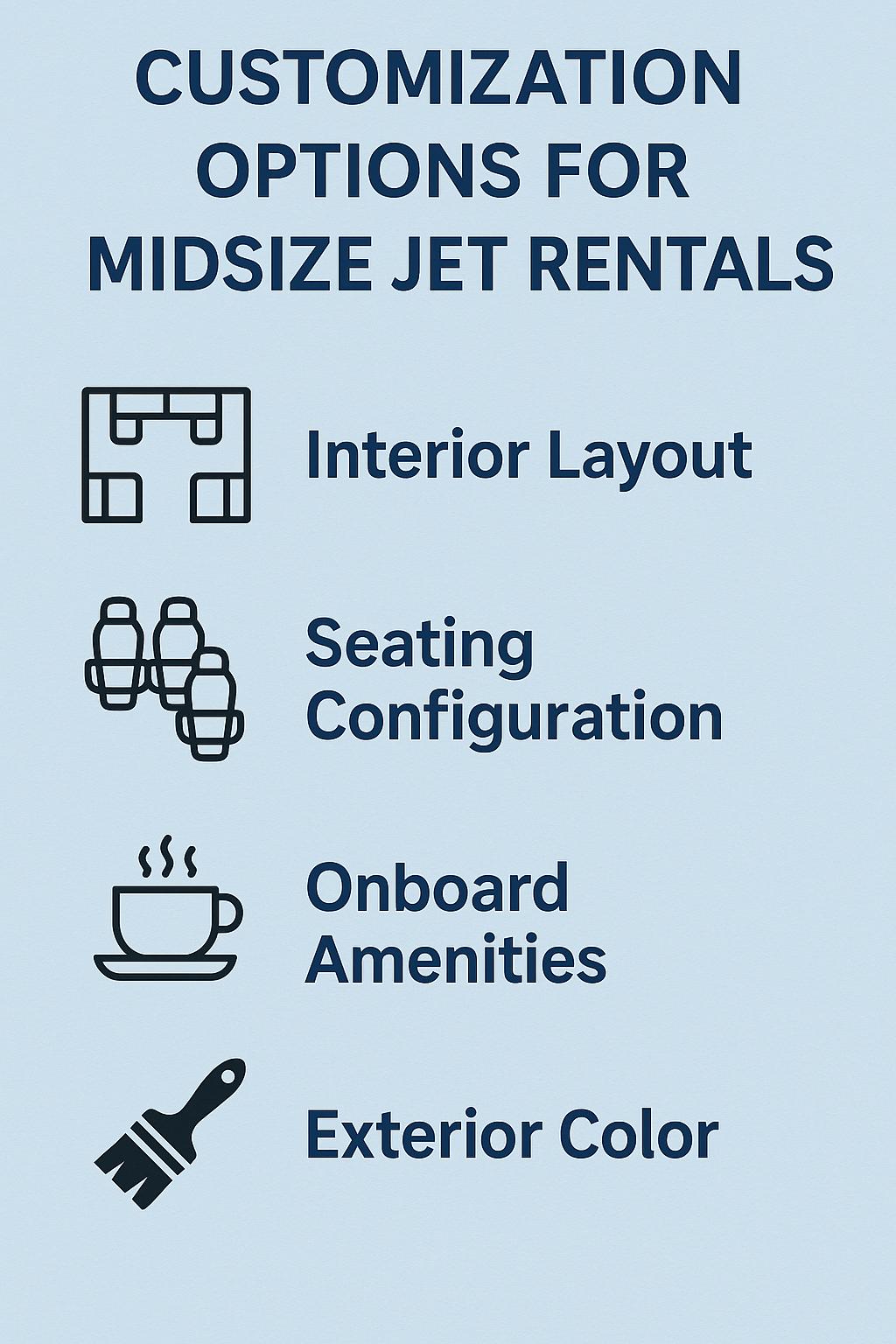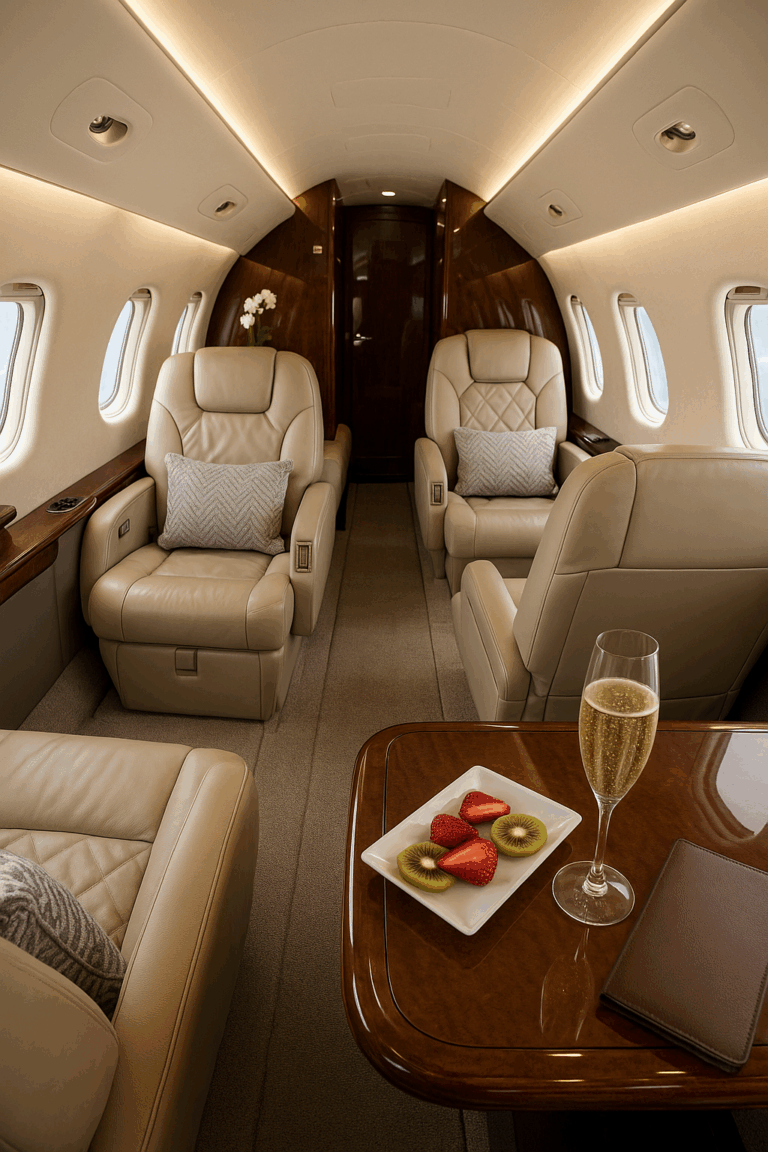Safety Features of Midsize Jets for Rent
Midsize jets for rent come equipped with impressive safety features. These include advanced avionics systems, cutting-edge weather radar, and vital terrain awareness technology. Each aircraft undergoes strict maintenance to ensure reliability. Pilots who operate these jets have extensive experience, with thousands of flight hours, and they engage in ongoing training to stay sharp.
In addition, these jets are built with enhanced structural safety measures. They also include emergency response capabilities and technologies that predict turbulence. Together, these elements create a robust safety framework that prioritizes your well-being throughout the flight. When you choose a midsize jet, you can trust that safety is a top priority.
Key Takeaways
Midsize jets come with impressive safety features that make them a solid choice for private air travel. These aircraft have advanced avionics, which include weather radar and terrain awareness systems. This technology helps pilots navigate safely, even when conditions are tough.
Pilots of midsize jets are highly skilled. They complete extensive training, logging thousands of flight hours. They also prepare for emergencies with specialized drills. This training is crucial for handling unexpected situations in the air.
Safety protocols are comprehensive. Regular safety inspections keep the jets in top shape, while crew training focuses on effective crisis management. This means that the teams are well-prepared to handle any issues that might arise during a flight.
The structure of midsize jets is designed for safety. Strict maintenance protocols are followed to ensure that every aircraft meets FAA regulations. This dedication to safety helps maintain the integrity of the jets.
Additionally, midsize jets utilize real-time turbulence prediction technology. This feature allows pilots to change their flight paths and avoid dangerous weather. Overall, these safety features make midsize jets a reliable option for travelers seeking comfort and security in the sky.
Advanced Avionics and Navigation Systems
Midsize jets are known for their advanced avionics and navigation systems, which enhance safety and performance. These aircraft feature cutting-edge terrain awareness and warning systems. They constantly monitor the surroundings and provide alerts to help prevent potential hazards.
The navigation systems in these jets are impressive. They allow for real-time changes based on weather and air traffic. This adaptability is crucial for safe flying. Autopilot features lessen the burden on pilots, ensuring precise flight paths with high accuracy. Digital displays and integrated communication systems keep pilots in constant contact with air traffic control, which is essential for smooth operations.
Another key aspect of midsize jets is their performance monitoring capabilities. These systems can identify issues quickly, preventing small problems from becoming serious. This combination of technology enhances flight safety and boosts efficiency. These innovations are vital when flying at 35,000 feet.
Advanced monitoring systems ensure small issues never become major problems when cruising at altitude.
Midsize jets offer a perfect blend of comfort and capability, making them a popular choice for both business and leisure travel.
Emergency Response Capabilities
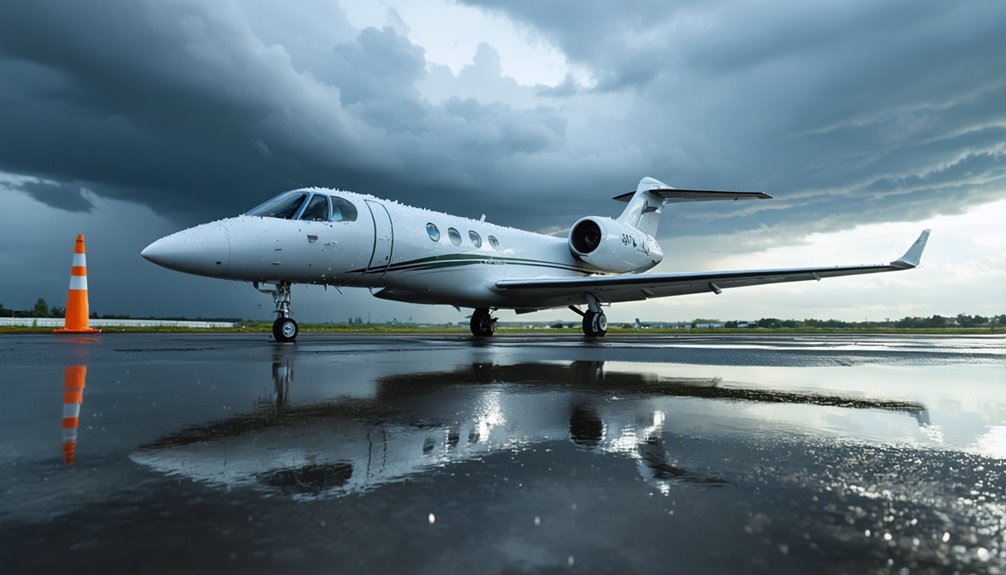
Midsize jets are known for their impressive emergency response capabilities. They’re designed with strong emergency procedures and crisis management protocols. These features help the crew address critical situations quickly and effectively.
When you choose to fly on a midsize jet, you can rest easy knowing that safety is a top priority. Each flight includes thorough safety inspections to ensure that all emergency equipment works properly. The pilots and cabin crew receive extensive training focused on keeping passengers safe during unexpected events.
A standout feature of midsize jets is their advanced communication systems paired with modern avionics. This setup ensures constant communication with ground support, which is vital in emergencies.
Thanks to this connectivity and the crew’s training, potential emergencies can be handled with confidence. This gives passengers peace of mind while traveling.
Structural Safety Enhancements

Midsize jets stand out in the private aviation world. Their structural design plays a crucial role in ensuring passenger safety. These aircraft are built to endure impact, especially during turbulence, which is reassuring for travelers.
Here’s a look at some key safety features:
| Safety Feature | Function | Benefit |
|---|---|---|
| Advanced Avionics | Monitor flight conditions | Improved operational safety |
| Real-time Weather Detection | Provide vital updates | Better pilot decision-making |
| Strategic Exit Placements | Ensure quick evacuation | Faster emergency response |
| Fire Suppression Systems | Manage onboard fires | Extra time for evacuation |
Emergency landing gear systems enhance safety even further. They work well with the features above, creating a comprehensive safety network. It’s impressive how manufacturers manage to include these important safety measures while keeping the sleek, modern look that makes midsize jets so attractive.
Pilot Qualification and Training Standards
Midsize jets are a popular choice for private air travel, blending comfort with efficiency. These aircraft typically seat between 6 to 8 passengers, making them ideal for small groups or business teams. They offer spacious cabins and often come equipped with amenities like Wi-Fi and refreshment services.
Pilots operating midsize jets have extensive training and experience. They log thousands of flight hours, flying various aircraft types. This experience ensures they’re prepared for diverse flying conditions. Regular training sessions keep pilots sharp and up to date with the latest safety protocols.
Safety is paramount in the aviation industry. Midsize jet pilots follow rigorous qualification standards, which include specialized training for challenging weather and emergency situations. They adhere strictly to FAA regulations, which help prevent fatigue and ensure that they perform at their best.
When you choose a midsize jet for your journey, you can trust that safety and comfort are top priorities. The combination of skilled pilots and advanced aircraft design makes for a reliable and enjoyable flight experience.
Maintenance Protocols for Midsize Jets
Midsize jets are a popular choice for private air travel, offering a balance of comfort and efficiency. These aircraft are known for their spacious cabins and longer range compared to smaller jets. They can comfortably seat six to eight passengers and often come equipped with amenities like full-service galleys and private lavatories.
Midsize jets typically have a range of about 2,000 to 3,000 nautical miles. This means they can easily handle flights from New York to Los Angeles or London to Madrid without needing a fuel stop. Their performance makes them ideal for both business and leisure travelers.
Air travel safety is crucial. Maintenance protocols for midsize jets ensure that these aircraft operate reliably. Regular inspections are performed to catch any issues before they become serious problems. Certified technicians conduct checks on engines and avionics systems. Structural assessments are done according to the manufacturer’s guidelines, ensuring the aircraft remains in excellent condition.
It’s also essential for these jets to adhere to strict regulations. Compliance with FAA standards is non-negotiable. Components are replaced proactively to prevent failures. These measures aren’t just about following rules; they reflect a commitment to passenger safety.
When you choose a midsize jet, you can trust that it’s been maintained with care. The focus on rigorous maintenance practices means you can enjoy your flight with peace of mind. Every detail is taken into account to provide a safe and comfortable travel experience.
Weather Detection and Avoidance Technologies
I’ve equipped many midsize jets with advanced weather detection systems that work perfectly with flight management computers. This technology gives pilots a clear picture of the atmospheric conditions ahead.
The turbulence prediction system analyzes air density patterns and vertical wind shear. This means pilots can adjust their course before passengers even notice any bumps.
When flying in a modern midsize jet, you’ll find the storm avoidance features impressive. They create a detailed 3D map showing precipitation intensity. This helps pilots steer clear of storm cells instead of flying right through them.
Midsize jets are designed with passenger comfort in mind, and these weather systems play a crucial role in ensuring a smooth flight experience.
Weather Detection Systems
Midsize jets are an essential choice for many private travelers. They blend comfort with performance, making them ideal for both business and leisure flights. One of their standout features is the advanced weather detection systems. These systems are crucial for keeping flights safe and stable.
When you’re aboard a midsize jet, you enjoy several benefits. The radar technology helps you see and track severe weather. This means pilots can make quick decisions to avoid dangerous storms. Real-time data on turbulence allows for immediate changes to the flight path, which enhances passenger comfort.
Cockpit displays show graphical weather information. This visual aid improves situational awareness for pilots. They can better understand what lies ahead, especially in challenging weather. Additionally, Terrain Awareness and Warning Systems (TAWS) help avoid obstacles when visibility is low.
Continuous updates come from onboard systems and air traffic control. These innovations significantly improve safety, allowing pilots to navigate around bad weather confidently. Passengers can relax, knowing they’re on a well-equipped aircraft.
Midsize jets offer a perfect mix of safety and convenience for travelers.
Turbulence Prediction Technology
Midsize jets are an exciting category in private aviation, especially when it comes to safety. One of the standout features is the Turbulence Prediction Technology. This technology has made a big difference in how we fly. Advanced weather radar systems help pilots change their flight paths in real-time. This means they can steer clear of rough air before passengers even notice it.
Another cool feature is the enhanced avionics. Predictive wind shear systems give crucial information about wind patterns that can affect the flight. Midsize jets now come with terrain awareness and warning systems, combined with smart weather detection tools. Together, these create a strong safety net for everyone on board.
When I fly in a midsize jet, I trust the real-time data analytics to predict turbulence accurately. This technology works closely with air traffic control, which keeps pilots updated during the flight. The outcome is a comfortable journey for passengers.
These advancements turn potentially bumpy flights into smooth experiences. It’s a clear sign of how safety features are changing private aviation for the better.
Storm Avoidance Capabilities
Midsize jets are known for their remarkable storm avoidance capabilities. These aircraft come equipped with cutting-edge weather radar systems that provide pilots with real-time information about developing storms. This allows pilots to change flight paths to ensure safety and comfort.
One key feature is the Terrain Awareness and Warning Systems (TAWS). These systems detect dangerous weather conditions before they escalate. Predictive weather technology is another asset; it forecasts turbulence and severe weather, helping pilots plan their routes better.
The cockpit avionics work well with storm detection systems. This integration offers immediate alerts to pilots, allowing them to make quick decisions. Pilots also receive training in advanced weather detection technologies through simulations. This training prepares them for real-life situations.
These innovative technologies significantly enhance flight safety. They help minimize disruptions during travel. Midsize jets give passengers confidence, even when the weather isn’t ideal. This ensures a smooth and secure journey, making them a popular choice for travelers.
Frequently Asked Questions
What Is the Safest Midsize Private Jet?
The Embraer Legacy 500 stands out as a top choice for safety in the midsize private jet category. This jet boasts an impeccable safety record. Its design incorporates cutting-edge technology that enhances safety.
Pilot training for the Legacy 500 is thorough and rigorous. This ensures that pilots are well-prepared to handle various situations. The jet also features strong emergency protocols. These measures work together to keep passengers secure during flights.
What Is the Safest Jet to Fly?
The Legacy 500 is a midsize private jet that offers a strong sense of safety. Many people who have flown in it report feeling secure during their journey. When we look at accident statistics and safety ratings, the Embraer Legacy 500 and its sister model, the Praetor 600, stand out. They have an impressive safety record, making them some of the safest jets in the sky today.
Midsize jets like the Legacy 500 are designed for comfort and efficiency. They can typically carry around 6 to 8 passengers and have a range of about 3,000 nautical miles. This makes them suitable for both short trips and longer flights. The jet’s advanced avionics and robust engineering contribute to its reliability.
Do Small Private Jets Experience More Turbulence?
Midsize jets are known for their balance of comfort and performance. They typically have a larger wingspan and more weight than smaller jets, which can help them handle turbulence better. However, they still encounter turbulence due to weather conditions.
Weather plays a significant role in turbulence. Midsize jets can fly at higher altitudes, where the air is generally smoother. This can lead to a more stable flight experience compared to smaller jets. Experienced pilots know how to navigate through or around turbulent areas, which reduces discomfort for passengers.
Midsize jets are designed with advanced technology that improves their aerodynamic efficiency. This design helps them cut through turbulent air more effectively. The combination of skilled pilots and sophisticated aircraft design makes flying in a midsize jet a pleasant experience, even when the weather is unpredictable.
How Safe Are Commercial Jets?
Midsize jets are a popular choice for travelers seeking comfort and efficiency. These aircraft strike a balance between smaller jets and larger ones. They offer more space and range than light jets but are still economical and easy to operate.
One of the standout features of midsize jets is their cabin size. You can expect a spacious layout, often with room for six to eight passengers. This makes them ideal for business trips or family vacations. Amenities often include a galley for in-flight meals and a restroom for convenience.
When it comes to performance, midsize jets are impressive. They can fly longer distances than light jets, typically around 2,000 to 3,500 miles. This means you can travel non-stop from cities like New York to Los Angeles without needing to refuel.
Safety is always a priority in aviation. Midsize jets adhere to strict regulations and undergo regular maintenance checks. Pilots receive extensive training to handle various flight conditions. This helps ensure a safe and smooth journey for all passengers.
Conclusion
I recommend midsize jets for clients because safety is crucial in luxury aviation. These jets feature advanced avionics and strict maintenance routines. They provide a sense of security that is invaluable.
When flying at 40,000 feet, you will notice the benefits of strong structural designs, reliable weather detection systems, and highly skilled pilots. These elements work together to ensure a safe journey. Midsize jets are not just about comfort; they prioritize your safety above all else.
